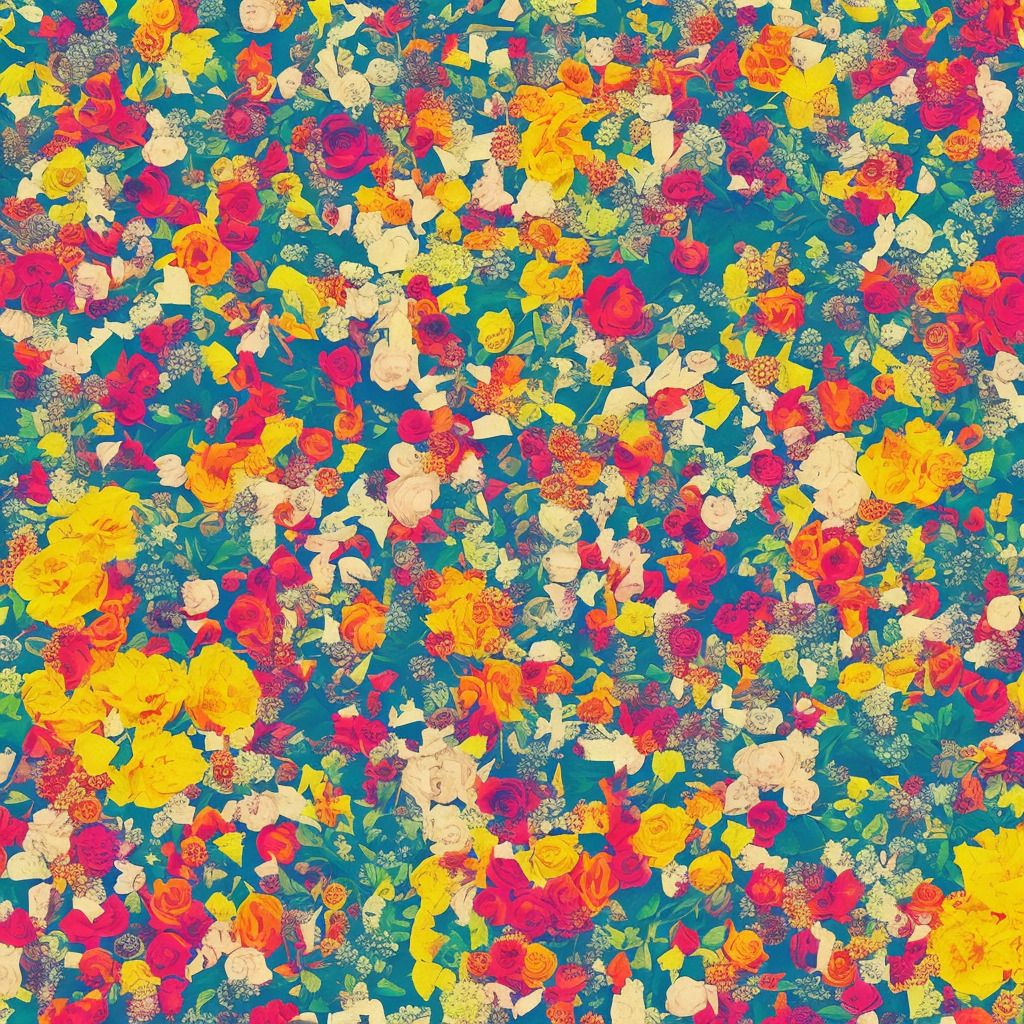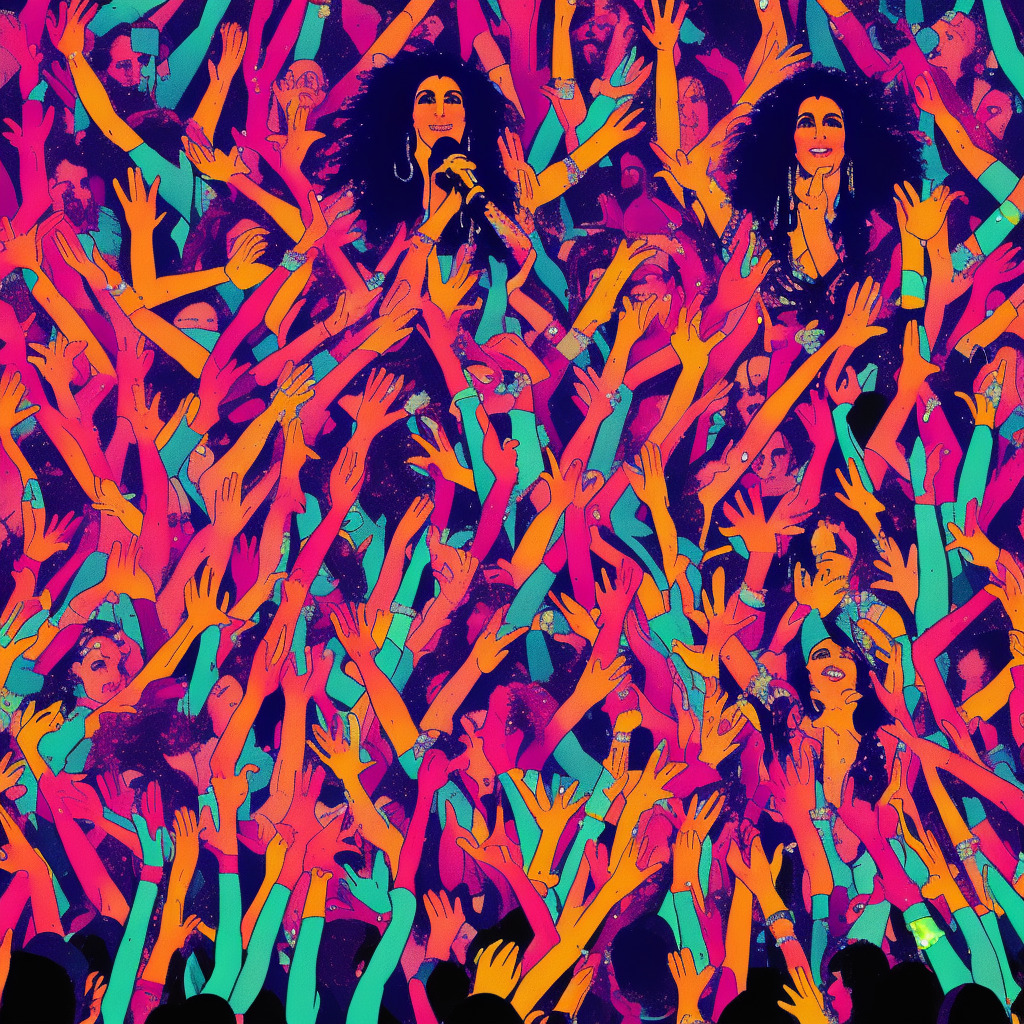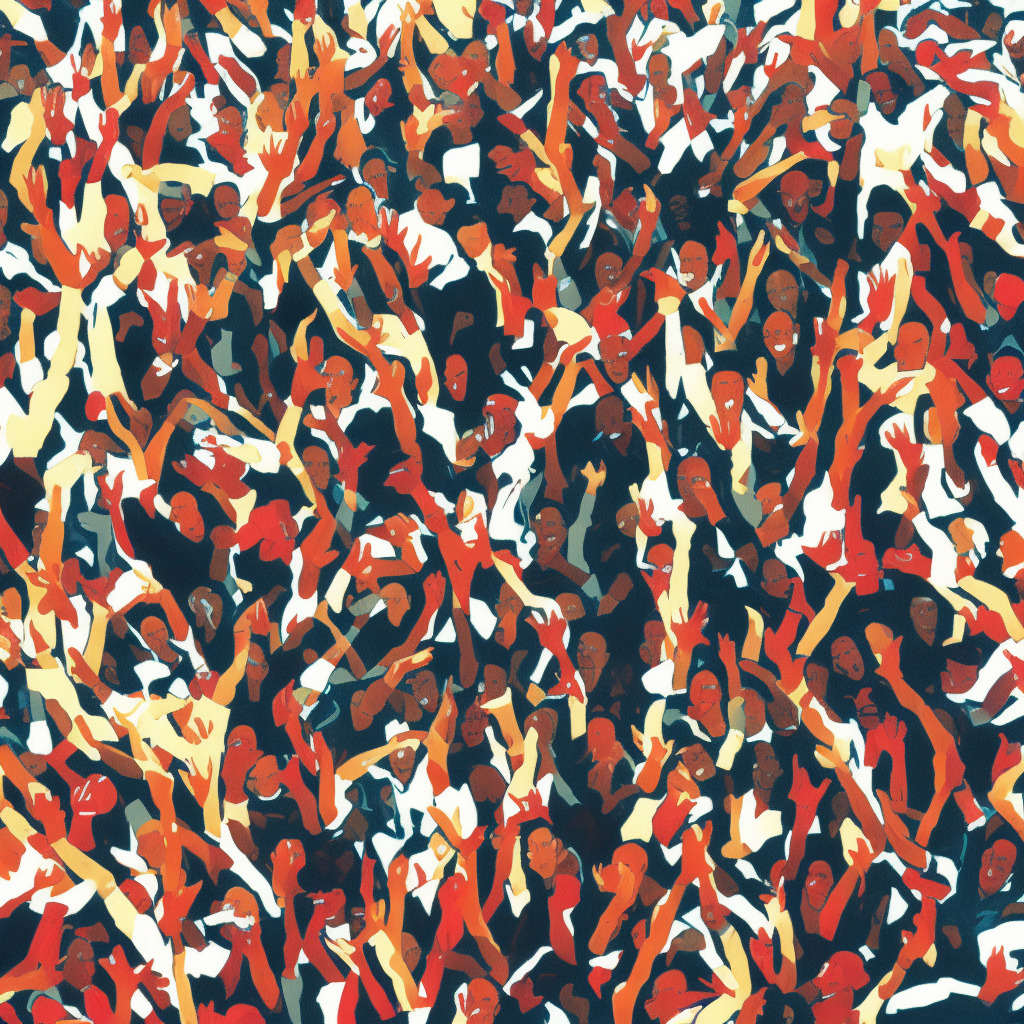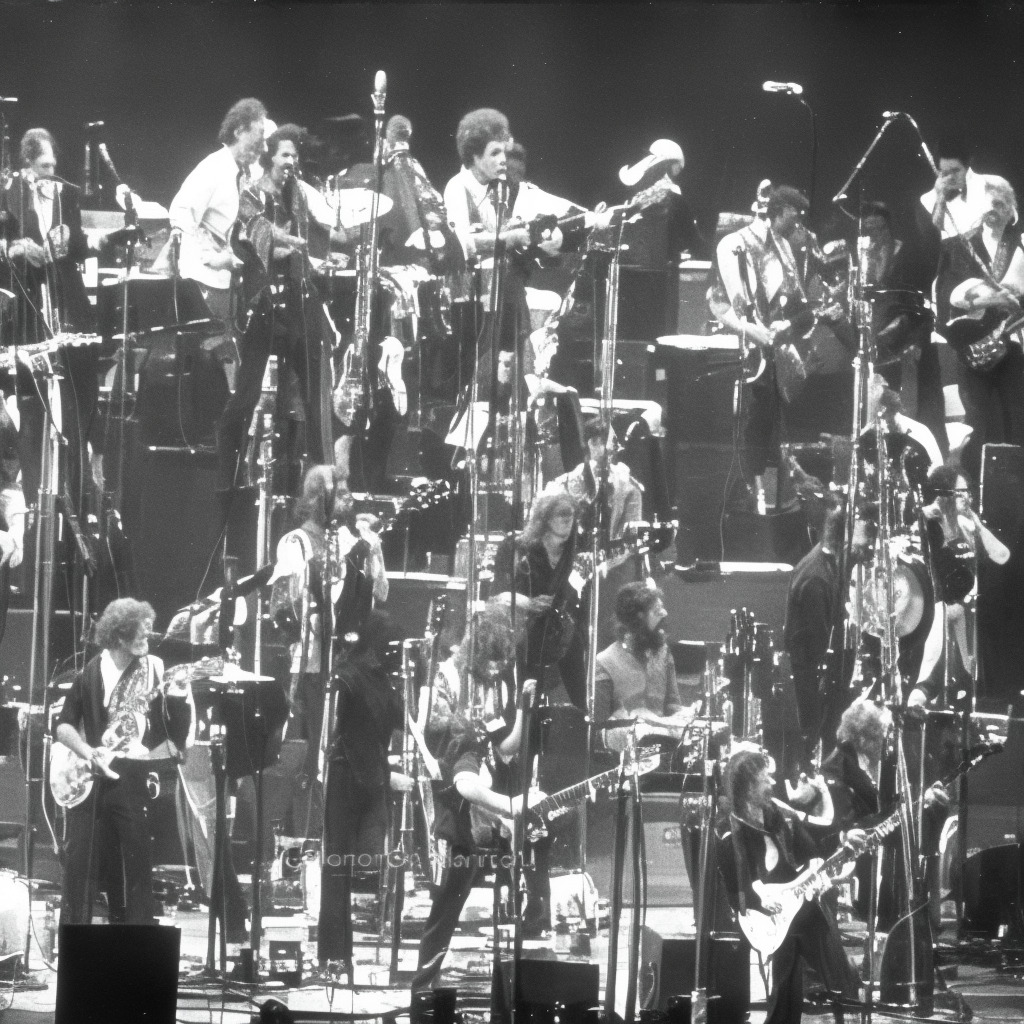Nirvana: The Band Behind ‘All Apologies’
Explore the roots and rise of Nirvana, the iconic band that reshaped the music scene with their raw and impactful sound, particularly with tracks like ‘All Apologies’.
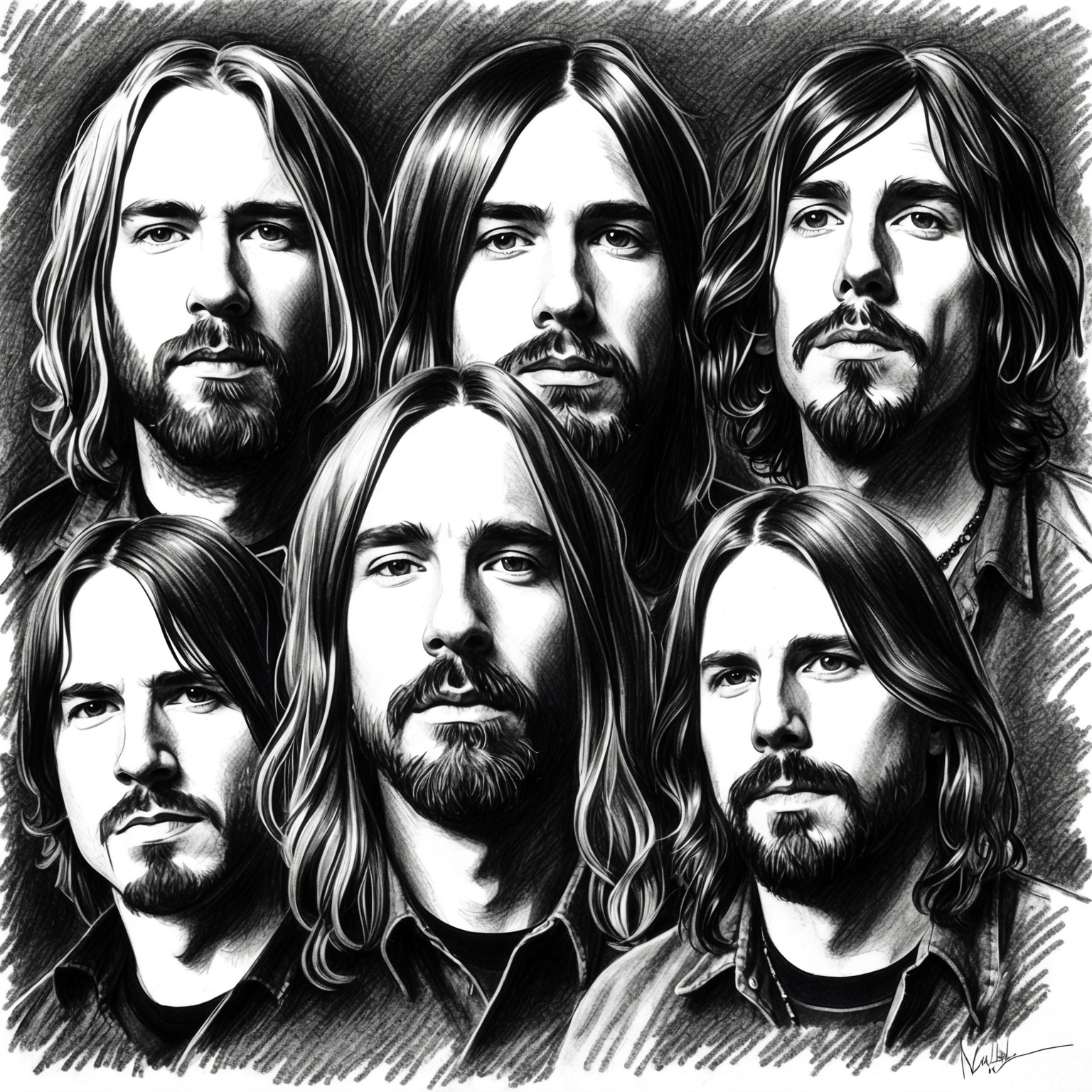
**Nirvana**, a band that redefined the sound of the early 90s, stands as a monumental pillar in the world of music. Formed in Seattle in 1987, the band was composed of **Kurt Cobain** as the frontman, **Krist Novoselic** on bass, and **Dave Grohl** on drums. With the release of ‘All Apologies’, Nirvana captured and conveyed raw emotion to a world that was invigorated by their grunge essence. This track, like many of their works, is a testament to their profound impact and revolutionary presence in music history.
The formation of Nirvana marked the beginning of a new musical revolution. **Kurt Cobain**, born in Aberdeen, Washington, had a tumultuous early life filled with both hardships and an unwavering passion for music. He met Krist Novoselic during their teenage years, and together they laid the groundwork for what would become Nirvana. Both Cobain’s introspective lyrics and Novoselic’s distinctive bass lines became defining features of the band’s identity. When Dave Grohl, a talented drummer from **Scream**, joined the band in 1990, Nirvana’s lineup solidified, ready to leave an indelible mark on the 90s grunge scene.
1993 was a pivotal year for Nirvana with the release of their third studio album, ‘In Utero’, featuring ‘All Apologies’. The song emerged during a time when Nirvana was at the peak of their career. Their unique sound contrasted sharply against the backdrop of the global rock scene dominated by glam metal. Cobain’s vision for music was deeply personal and often collaborative, drawing influence from both personal experiences and interactions with fellow artists. Despite the internal and external pressures, the band managed to create art that was both accessible and impactful, a characteristic that remains significant to this day. ‘All Apologies’ exemplifies this, reflecting the band’s ability to voice vulnerability while maintaining their raw grunge tone.
Kurt Cobain: The Creative Force Behind ‘All Apologies’
Kurt Cobain, the genius behind ‘All Apologies,’ played a pivotal role in shaping its poignant melodies and emotional depth, reflecting his unique style and influences.
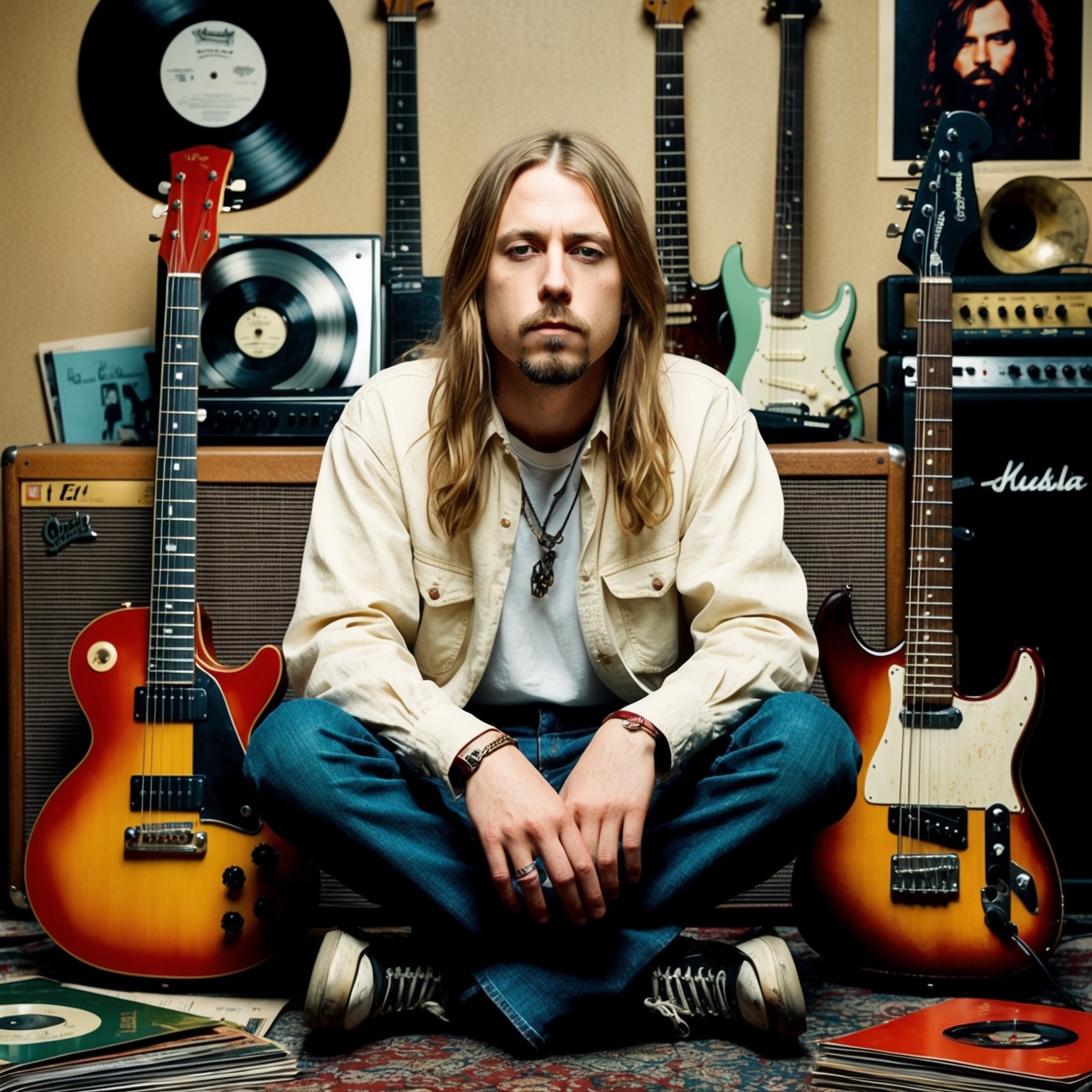
All Apologies, one of Nirvana’s most iconic tracks, is deeply intertwined with the genius of Kurt Cobain, the band’s frontman and primary composer. Born in Aberdeen, Washington, Cobain emerged in the late 1980s as an emblematic figure of the grunge movement. His early affinity for music was largely self-taught, characterized by an expressive blend of punk, rock, and raw emotion, contributing to his distinctive style. Over his career, Cobain became a pivotal figure in rock music, imprinting his unique voice and sound on every composition he created. His ability to translate personal anguish into universal themes endeared him to generations of fans and artists alike.
Cobain’s musical style was rooted in grunge but was notably influenced by punk rock, garage rock, and indie styles. Bands like the Pixies and Meat Puppets shaped his approach to songwriting, favoring simplicity and emotional authenticity over technical complexity. This ethos is evident in ‘All Apologies,’ where Cobain’s composition blends melancholy with melody, producing an ambient, almost haunting soundscape. His lyrics often reflected personal experiences and existential musings, making his songs resonate deeply on an emotional level.
During his tenure with Nirvana, Cobain often collaborated with band members Krist Novoselic and Dave Grohl, both of whom contributed profoundly to the Nirvana sound. With ‘All Apologies,’ however, Cobain maintained a tight hold on the composition, ensuring his vision was fully realized. The song’s success lies in how Cobain’s composition balances between raw vulnerability and polished songwriting. His knack for crafting poignant melodies intertwined with insightful lyrics underscores his role as the cornerstone of Nirvana’s creativity.
Celebrating ‘All Apologies’: Accolades and Iconic Covers
The enduring legacy of Nirvana’s ‘All Apologies’ is celebrated through accolades, notable covers by various artists, and its continued impact in popular media.
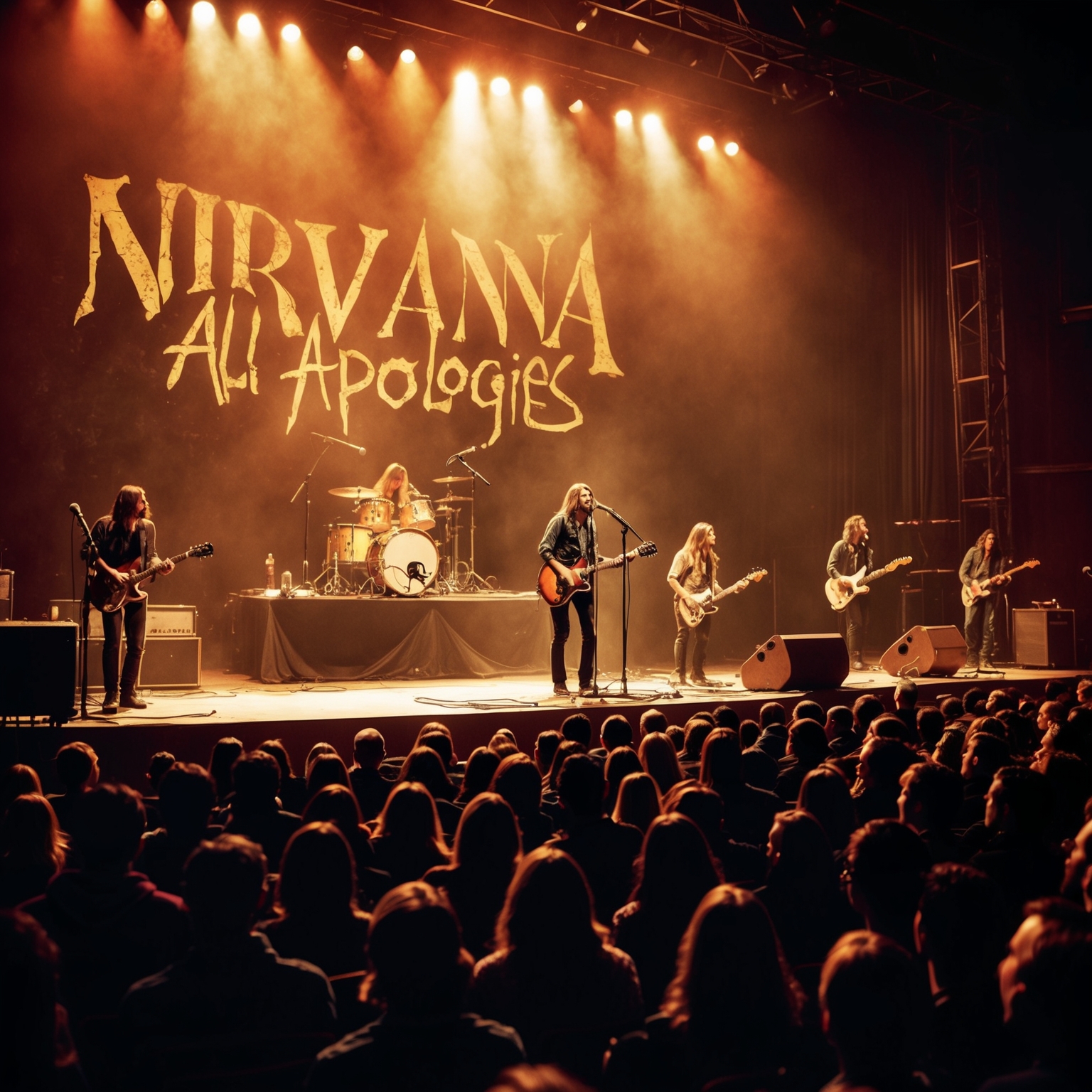
All Apologies, a cornerstone of Nirvana’s legacy, has not only captured the hearts of millions but has also received significant recognition since its release. While the song itself might not have received a multitude of awards directly, it stands as a critical piece of the tapestry that is Nirvana’s enduring influence in the world of music. The beauty of ‘All Apologies’ lies in its raw emotion and authenticity, driving its recognition in charts and by critics alike.
Although official awards for the song itself might be scarce, ‘All Apologies’ is lauded for contributing to Nirvana’s overall triumph at major award shows. For instance, its presence on the Grammy award-winning album MTV Unplugged in New York helps highlight its impact. The album won the Grammy Award for Best Alternative Music Performance posthumously in 1996, signifying how pivotal this song was to the live recording’s success.
Beyond accolades, ‘All Apologies’ has inspired numerous artists to make it their own, resulting in an impressive array of covers. Notable renditions include those by artists such as Sinead O’Connor and Herbie Hancock, each bringing a unique flavor while keeping the emotional gravity intact. These covers have contributed to the song’s timeless appeal, communicating its poignant message to new audiences across different genres and generations. Whether in movies, TV shows, or video games, ‘All Apologies’ continues to be a symbol of the 90s grunge movement, ensuring its relevance in popular culture today.
Chart Domination and Cultural Impact
“All Apologies” marked a pivotal moment in Nirvana’s career, achieving substantive chart success and further solidifying their impact on the musical landscape. Peaking at number 1 on the Billboard Modern Rock Tracks, it was celebrated for its cultural resonance and strategic promotion, epitomized by the iconic MTV Unplugged performance.
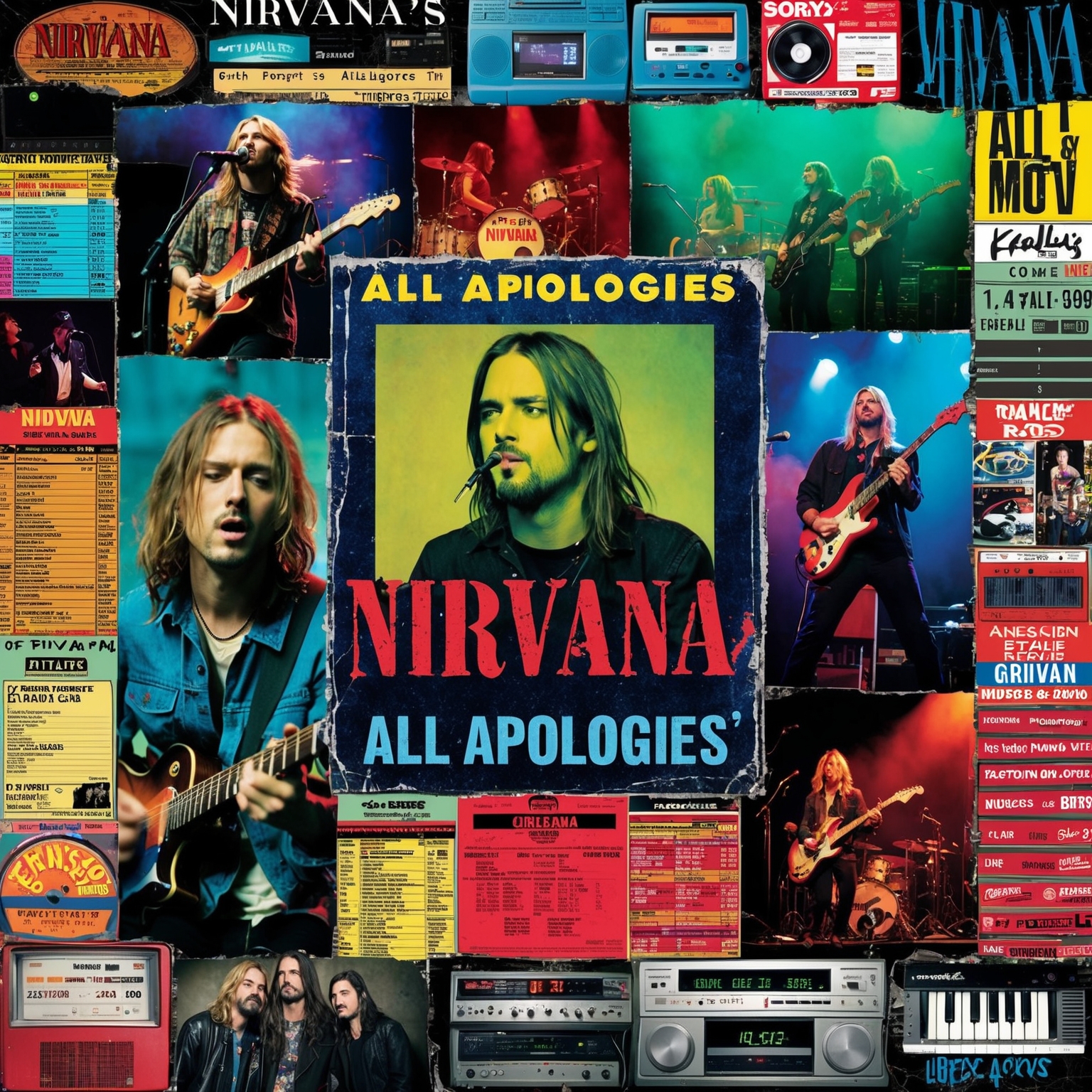
Upon its release on December 6, 1993, “All Apologies” emerged as a significant entry in Nirvana’s discography. The single, paired with “Rape Me,” was well-received despite the shadow of Kurt Cobain’s untimely death not long after. It achieved notable chart success internationally, marking its impact in both the UK and US markets. In the US, it secured a spot on the Billboard Modern Rock Tracks, peaking at number 1 in 1994, while in the UK Singles Chart, it ascended to a respectable position at number 32. These rankings were a testament to the song’s resonance with listeners across the globe, highlighting its powerful and timeless appeal.
Nirvana’s “All Apologies” wasn’t just another rock song; it was a cultural turning point that reaffirmed the band’s influence at the height of the grunge movement. It was not their entry point into the mainstream, but rather a poignant follow-up to their previous successes that solidified their standing in rock history. The success of “All Apologies” underscored the lasting impact of Nirvana’s previous breakthroughs, such as “Smells Like Teen Spirit,” and highlighted their ability to consistently deliver music that resonated with a wide audience.
The promotional strategy for “All Apologies” predominantly capitalized on Nirvana’s established fan base and their reputation as a seminal force in the grunge scene. The acoustic performance of “All Apologies” on MTV Unplugged in New York became instrumental in boosting the song’s popularity. This performance showcased a raw, stripped-down version of the track, earning it critical acclaim and further solidifying its place in popular culture. The marketing prowess extended beyond traditional methods, allowing the song to thrive through heavy radio play and television appearances, which significantly contributed to its chart success.
The Visual World of ‘All Apologies’
Uncover the visual landscape of ‘All Apologies’ through live performances and fan creations. Discover how these visual narratives capture the song’s essence and enhance its iconic status.
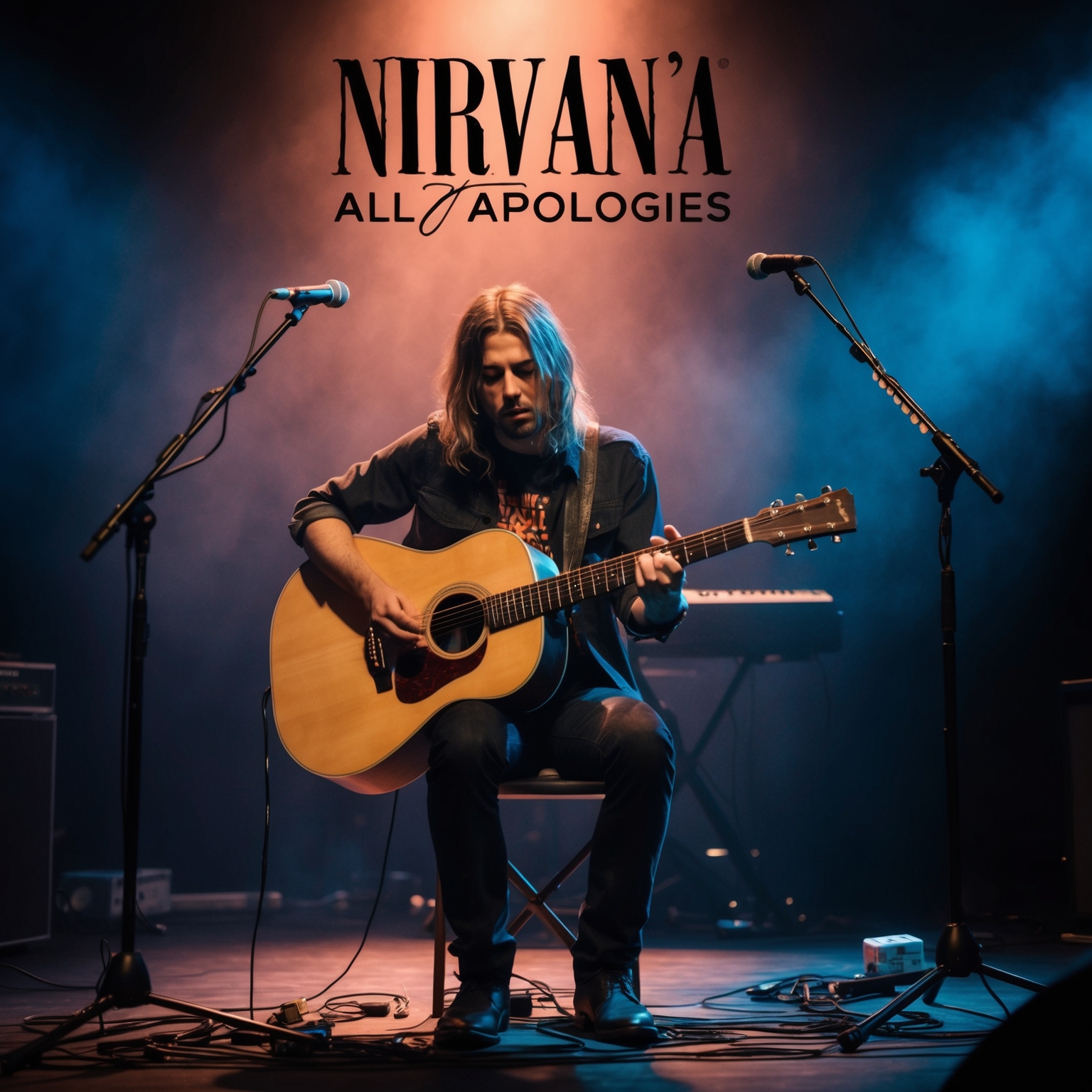
Nirvana’s ‘All Apologies’ is as iconic in its visual representation as it is in its sonic experience, despite not having an official music video. While there isn’t an official video crafted for the song, fans often turn to live performances and imaginative fan-made creations to visually capture its essence. This absence has allowed enthusiasts to explore their interpretations, leading to an ever-evolving visual experience of the track. Among the fan-created content, montages often blend footage from Nirvana’s MTV Unplugged performance with imagery resonating with the song’s themes of introspection and existential contemplation.
Live performances of ‘All Apologies’ offer a sincere visual narrative that reinforces the song’s authenticity. Particularly, Nirvana’s MTV Unplugged in New York concert has become synonymous with the song, presenting a raw and stripped-back visual and aural delivery. This intimate portrayal emphasizes the vulnerability in Kurt Cobain’s voice and the simplicity of the song’s arrangement, offering an unfiltered window into the band’s dynamic and Cobain’s soul-stirring lyrical introspection.
Despite the lack of an official music video, ‘All Apologies’ enjoys a visual identity crafted by its audience. The existing visuals enhance the song’s allure, enticing both critical praise and fan adoration for their seamless blending of sound and imagery. Directors and creators behind numerous fan videos are celebrated for their ability to capture the spirit of Nirvana’s music, even drawing nods from industry insiders for their ingenuity. As fans continue to create visual tributes, ‘All Apologies’ remains a testament to the power of collaborative artistic expression.
Unraveling the Sonic Tapestry of ‘All Apologies’
A deep dive into ‘All Apologies’, exploring its musical key, chord structures, tempo, and instrumentation to understand its place in Nirvana’s artistic journey.
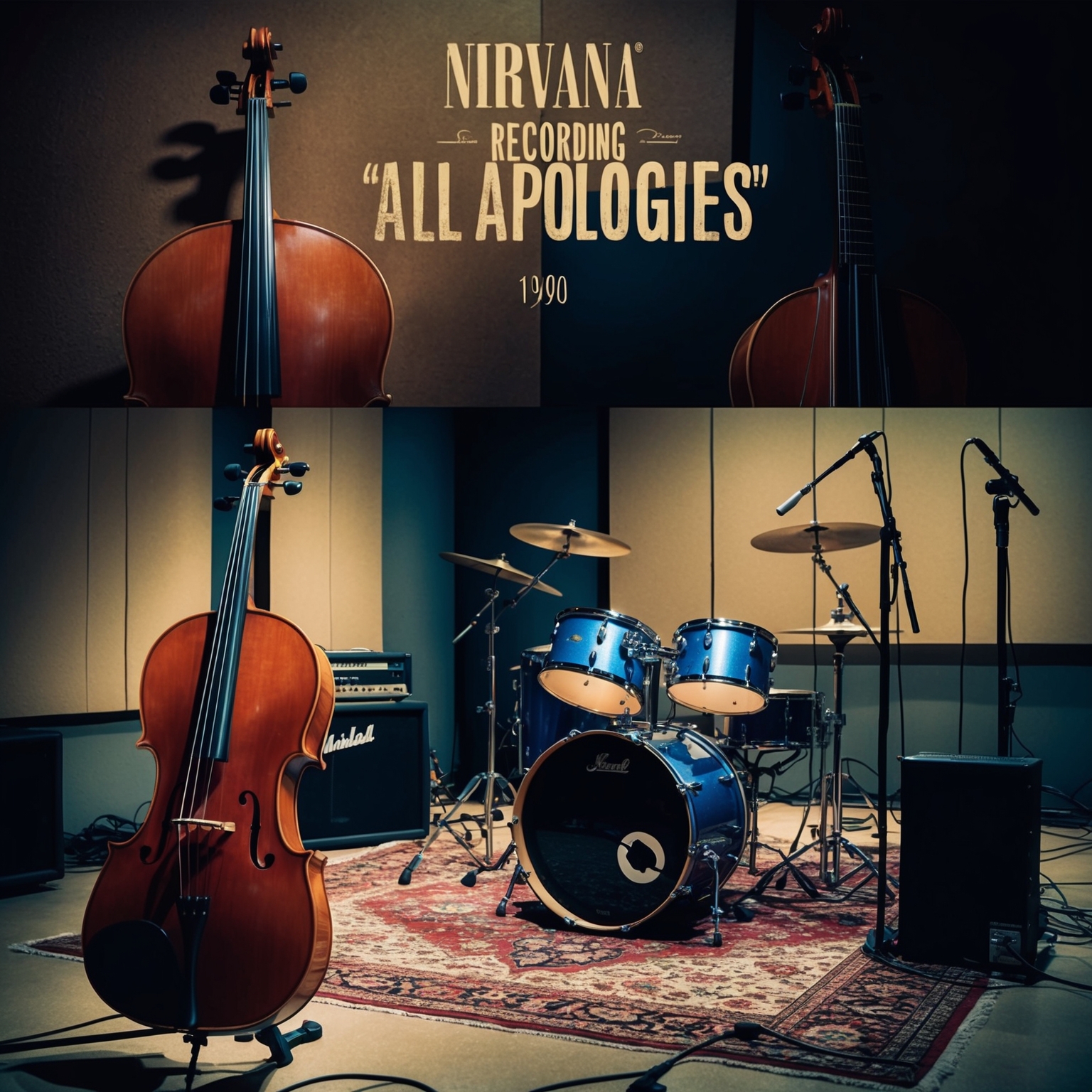
‘All Apologies’ showcases Nirvana’s prowess in crafting unique and memorable musical compositions. The song is written in the key of F# minor, a key choice that lends itself to the melancholic yet hopeful tone that is quintessentially Nirvana. The chord structure predominantly oscillates between F# minor and D, a minimalistic approach that allows the lyrical content and emotional delivery to shine.
The song’s tempo is moderate, lending a reflective and lax aura that complements the vulnerability in Cobain’s voice. The rhythm is steady, carried by Dave Grohl’s signature drumming style, allowing the focus to remain on the melody and Kurt Cobain’s haunting vocal performance. The melody is beautifully layered, featuring simple yet effective harmonization that enhances the depth of the song without overshadowing its poignant essence.
Instrumentally, ‘All Apologies’ is sparse without feeling empty. The combination of Cobain’s raw guitar riffs, Krist Novoselic’s earthy bass lines, and Grohl’s steady percussion creates a sound that is distinct yet familiar. The introduction of cello by Kera Schaley, particularly in the Unplugged version, adds a richness and complexity to the song’s arrangement, highlighting Nirvana’s ability to blend grunge with introspective acoustic elements seamlessly.
When contextualized within Nirvana’s discography, ‘All Apologies’ marks a fascinating point in the band’s evolution. While maintaining the rawness and intensity evident in Bleach or Nevermind, it signals a maturity and openness that is further explored in MTV Unplugged in New York. This song stands as a testimony to the band’s capability to diversify their sound while staying true to their unique identity.
Interesting anecdotes from its recording at Pachyderm Studio reveal Cobain at a particularly introspective period, often described by producer Steve Albini as a time when the band was both focused and relaxed. Such conditions fostered creativity, allowing for a raw, organic output that emphasized emotional resonance over technical perfection.
Unraveling the Poetic Layers of ‘All Apologies’
Nirvana’s ‘All Apologies’ explores themes of identity, inadequacy, and social tolerance. The song features Cobain’s signature introspective style, with ambiguous yet evocative lyrics that invite varied interpretations.
All apologies
What else could I say?
Everyone is gay
What else could I write?
I don’t have the right
What else should I be?
All apologies
In the sun
In the sun, I feel as one
In the sun
In the sun
Married
Buried
I wish I was like you
Easily amused
Find my nest of salt
…
******* This Lyrics is NOT for Commercial use *******
 Nirvana’s ‘All Apologies’ is a raw and profound expression of existential introspection and social commentary. Its lyrics delve into themes that are deeply personal yet resonant on a broader societal level, embodying feelings of inadequacy, disillusionment, and longing for acceptance. The repeated questions, ‘What else should I be?’ and ‘What else could I say?’ articulate a sense of identity crisis and introspection, reflecting Cobain’s struggles with self-expectations and public perception.
Nirvana’s ‘All Apologies’ is a raw and profound expression of existential introspection and social commentary. Its lyrics delve into themes that are deeply personal yet resonant on a broader societal level, embodying feelings of inadequacy, disillusionment, and longing for acceptance. The repeated questions, ‘What else should I be?’ and ‘What else could I say?’ articulate a sense of identity crisis and introspection, reflecting Cobain’s struggles with self-expectations and public perception.
The narrative of ‘All Apologies’ is notably abstract, lacking a structured storyline, which adds to its enigmatic allure. Written predominantly from a first-person perspective, the lyrics offer a window into Cobain’s contemplative mind. This narrative ambiguity invites listeners to project their interpretations, making it profoundly impactful and personal. When Cobain sings ‘In the sun, I feel as one,’ it blends imagery of unity with nature, contrasted by the later mention of being ‘Married, Buried,’ hinting at life’s duplicity between joy and confinement.
Literary devices are intricately woven throughout the song. Metaphors like ‘nest of salt’ suggest a place of discomfort and stasis, metaphorically illustrating Cobain’s personal trials. The use of paradoxical language and stark contrasts in phrases enhances the song’s emotional depth, making it a poignant reflection on the artist’s internal tussles. The minimalistic rhyme scheme contributes to the song’s haunting and lingering quality, leaving an indelible impression on the listener.
The song’s lyrics, while personal, capture universal themes of searching for self-worth and understanding in a complex world. As a composition intertwined with Nirvana’s grunge aesthetic, ‘All Apologies’ also speaks volumes through its sense of profound dissonance, enabling a connection between Cobain and the audience. When it comes to emotional impact, the song strikes a chord with its raw honesty, making it relatable to anyone who’s ever grappled with their imperfections or societal expectations.
Culturally, the line ‘Everyone is gay’ was misinterpreted by some as a commentary on sexual orientation, though it more likely signifies a broader call for acceptance and understanding across various identities. Cobain has often spoken about why he used such phrases, relating to his advocacy for LGBTQ+ rights and his stance against discrimination. This cultural layering makes ‘All Apologies’ not only a piece of music but a socio-cultural statement many of Nirvana’s fans deeply resonate with.
Did you know? 🧐 Nirvana’s All Apologies was recorded in a barn at Pachyderm Studio! Talk about grunge meets nature vibes! 🎸🌳 #Nirvana #AllApologies #FunFact #GrungeLegend tinyurl.com/4wz67vx3
Click to Tweet


